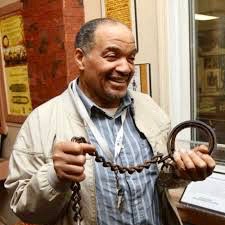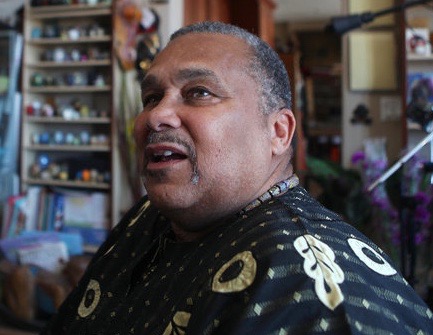Sankofa Museum of African American Diaspora of History and Culture: 10 Historical Collectors

Lawrence E. Walker Foundation Collection
www.lewfoundation.org
What’s the Difference Between Black and African Americans? Genealogy and History of Black Americans
1. Lawrence E. Walker Foundation Collection on Slavery and Underground Railroad, African American Historic Cemetery & African American Churches Collection (1700-the 1800s), World War II and Korean War Collection (research, photographs, and film) research files, digital photographs, films, books and over 20,000 albums of blues, jazz, big band and talking heads in the ’20s, ’30s, ’40s, ’50s, 60’s and much, much more. My latest books: “Sweet George Brown: Impact, Courage, Sacrifice, and Will,” about African American Women during World War II, “Free At Last, Free At Last, Thank God Almighty, I’m Free At Last: A Photographic & Historical Guide To African American Cemeteries in New Jersey, Pennsylvania & New York,” and “Let The Church Say Amen: A Photographic & Historical Guide To African American Cemeteries in New Jersey, Pennsylvania & New York.”
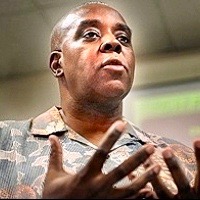
Filmmaker LAWRENCE E. WALKER has spent over 35 years collecting historic photographs, visiting African- American historic sites in New Jersey, Pennsylvania, New York, and across the country. He has done research on a 2-set CO-ROM titled Journey to Freedom: The African-American Experience in New Jersey, 1638-1931, a project which includes a book, an educational CD-ROM, and an inspirational music CD on slavery and the Underground Railroad. Lawrence is President/CEO of PureHistory and the Lawrence E. Walker Foundation Collection. He has worked as a freelance cameraman and editor for NBC, CBS, News 12, and TKR Cable Company. Also, he has worked on several PBS documentaries Paul Robeson: A Commentary, To Serve My Country, To Serve My Race. A graduate of Kean University in Union, New Jersey. Lawrence E. Walker was born and raised in Elizabeth, New Jersey.
In 1995, Lawrence partnered with Renaldo Mack and founded a production company called Bull’s-Eye Production Inc., which would develop documentaries for Cable T.V & Network T.V. They produced two award-winning projects titled: “Serve My Country, To Serve My Race,” and Paul Robeson: “Here I Stand Determine.” In 1996, Lawrence had the opportunity to work with a brand new 12 hour Cable News Network called News 12, Edison, New Jersey, editing news before it went live for broadcast. Mr. Walker, today is President/CEO of PureHistory.org, which is an online social search engine and media network focusing on American History and around the world. In 1997 he was awarded an Army Person of the Year Award in Philadelphia, Pennsylvania for his research on the history of African American Women who served during World War II. He documented over 40 years of history being lost in publications, books, and documentaries. In 2000 he started working on a 6-hour documentary on Slavery and the Underground Railroad in New Jersey, Pennsylvania, and New York between 1600 to 1800s. In early January 2021, Mr. Walker started the process of building a Sankofa African American Diaspora of History and Culture 3D Museum (SMAADHC) online.
Listen to the live interview with Lawrence E. Walker at WCTC Radio below on August 25, 2019.
https://wctcam.com/wp-content/uploads/sites/25/2019/08/Alan-David-Stein.mp3?download=true
Sweet Georgia Brown
______________________________________________________________________________
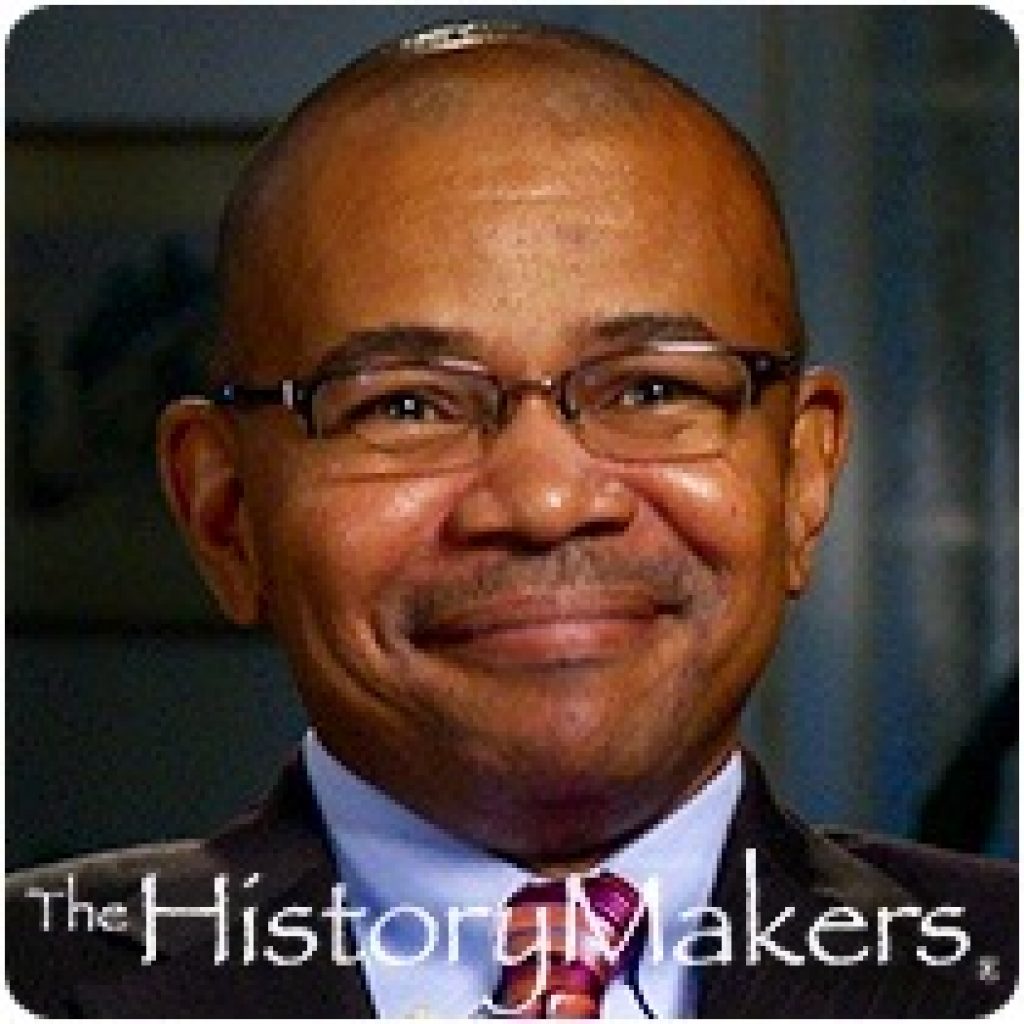
Historian, writer, appraiser and collector Philip J. Merrill was born in 1962 in Baltimore, Maryland, and grew up in the Sandtown-Winchester neighborhood of Baltimore. His mother headed a nonprofit job training institute for the disadvantaged; his father, George B. Merrill, was a pastor. Merrill’s great-grandmother helped to raise him. He was one of only two African American students in his graduating class of 1981 at the Friends School of Baltimore. Merrill would go on to graduate from Loyola University in Maryland in 1985.
In 1994, Merrill founded the organization Nanny Jack & Company, an archives and consulting agency specializing in creating projects that illuminate the African American experience through memorabilia, oral history and research. The company would eventually house over 30,000 artifacts, including photographs, rare books, folk art, documents, music, dolls, furniture, and quilts. Nanny Jack & Company would go on to collaborate with various educational organizations and television channels, including The Smithsonian Institution’s Anacostia Museum and Center for African American History and Culture, the Discovery Channel, the Maryland Historical Society, Maryland Public Television, and the History Channel. In 1996, Merrill became an appraiser with the Public Broadcasting Service’s (PBS) television show Antiques Roadshow. He created the category for black memorabilia on Antiques Roadshow, and would stay on the program until 2001. Then, in 2006, Merrill became a fellow of Open Society Institute, where he developed the “Know History, Know Self” program, which used artifacts to teach African American students about their family, community and school history.
Life Story Chat with Philip J Merrill
By the late 1930’s, America was deep in the Jim Crow era. Baltimore, located in a southern U.S. state, was a hotbed for issues surrounding Jim Crow. Billie Holiday, among other great Baltimore musicians of this time period, performed music that would challenge Americans to end Jim Crow and bring about a truly equal society.
In 1998, Merrill published the book The Art of Collecting Black Memorabilia, and, in 1999, he published The Black America Series: Baltimore, which chronicled the history of the Baltimore’s African American community. Merrill was also the editor of a 2002 book of historical photographs entitled The World War II Black Regiment that Built the Alaska Military Highway: A Photographic History. Then, in 2013, he authored the children’s book, How Princess Wee Wee Got Her Name. Merrill was named Baltimore City Paper’s Best Historian in 2001, and, in 2002, Merrill received the Towson University’s Distinguished Black Marylander Award. He was awarded an Honorary Doctorate of Humane Letters from Eastern Theological Seminary in 2007. Philip J. Merrill was interviewed by the The HistoryMakerson August 8, 2013.
______________________________________________________________________________
3. Col. William A. De Shields Collection (African American books, publications, photographs, military collections)
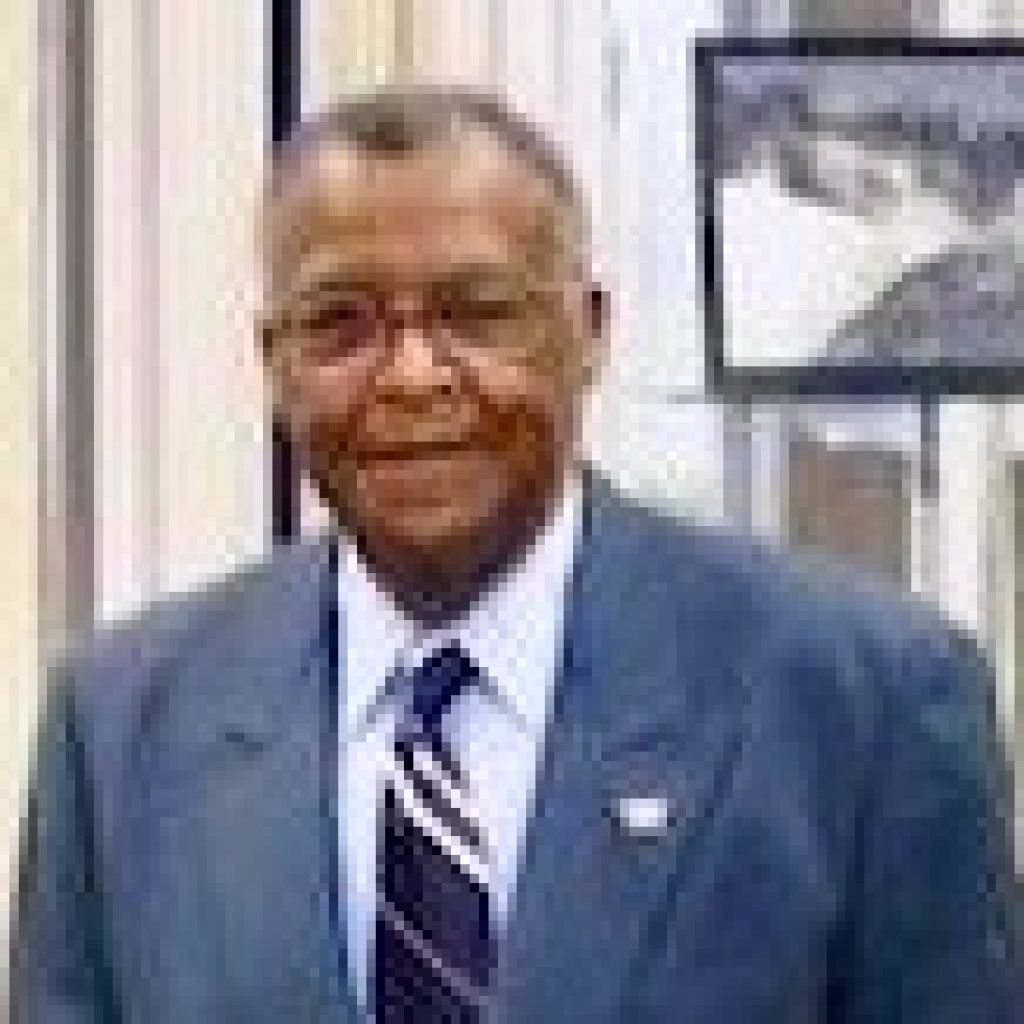
Retired Colonel William DeShields, a member of a long time Bellevue family will share his private collection of memorabilia, photos and personal histories from the early 1920’s to the present at his township library.
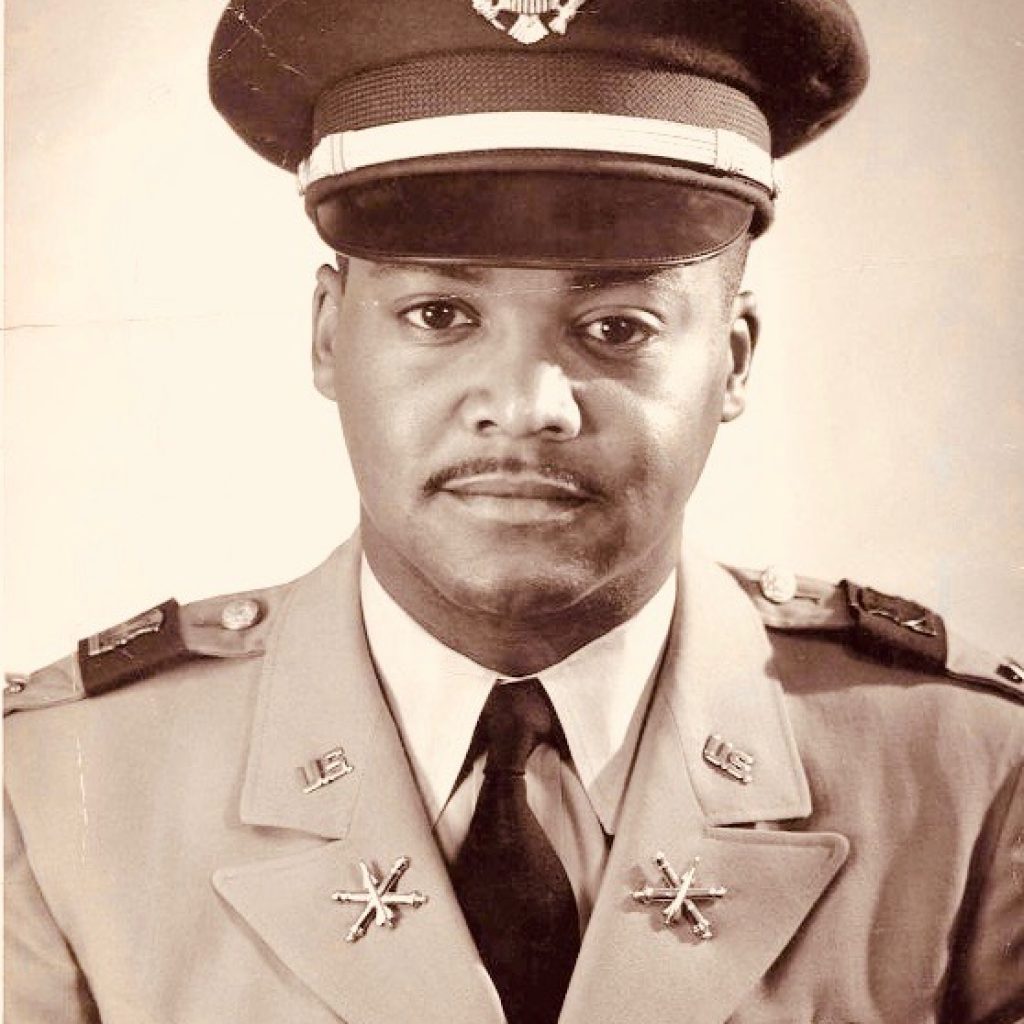
After serving thirty years in the United States Army Colonel DeShields went on to have a successful career in a variety of fields. He established the Black Military History Institute of America. His work involved working on exhibits for the Smithsonian Air and Space Museum as well as working with the Department of Defense to commemorate the 50th Anniversary of World War II. With his extensive knowledge of the Tuskegee Airman he had to opportunity to work with HBO in the production of the 1995 movie “The Tuskegee Airmen.”
Many black soldiers made that choice — or were drafted, and DeShields is working to preserve the memory of their contributions. He is the founder of the Black Military History Institute, a nonprofit organization incorporated in 1987. It began, he said, when he and some friends visited the Banneker-Douglass Museum in Annapolis, which focuses on African-American history. At that time, he said, it was being used more as a meeting place than anything, so DeShields and some others organized an exhibit about black history from the Revolutionary War to Vietnam. The nonprofit started as a spinoff from that exhibit.
DeShields said the collection consists mostly of historical photos. He has a lot of raw material, but hasn’t done much research lately. He has a lot going on, and he is getting older. “I’m at the point now where I need somebody to pick up the initiative,” he said. To learn more about Col. William DeShields go to the link below:
______________________________________________________________________________
4. Joe and Gwen Rasdale (the world biggest slave shackle collections in the world)
“Lest We Forget” –Museum of Slavery, founded 2002 is home to the private Ragsdale collection of slavery artifacts, Bill of Sale documents and Jim Crow memorabilia owned by J. Justin & Gwen Ragsdale. The exhibit includes authentic slave shackles, chains, whips, branding irons and other items that were used for human bondage and punishment. It also includes numerous objects from the Jim Crow era that negatively depict Blacks. This compelling collection truly brings history alive and provides a better understanding of the pain and suffering endured by kidnapped Africans brought to America and other parts of the world and held in bondage for hundreds of years. The LWF extensive collection of slavery artifacts and other items were acquired over the past 45 years by J. Justin Ragsdale. LWF Museum is the only museum in Philadelphia, PA with authentic slavery artifacts that include: shackles, branding irons and other forms of punishing ironware from the Trans-Atlantic slave trade.
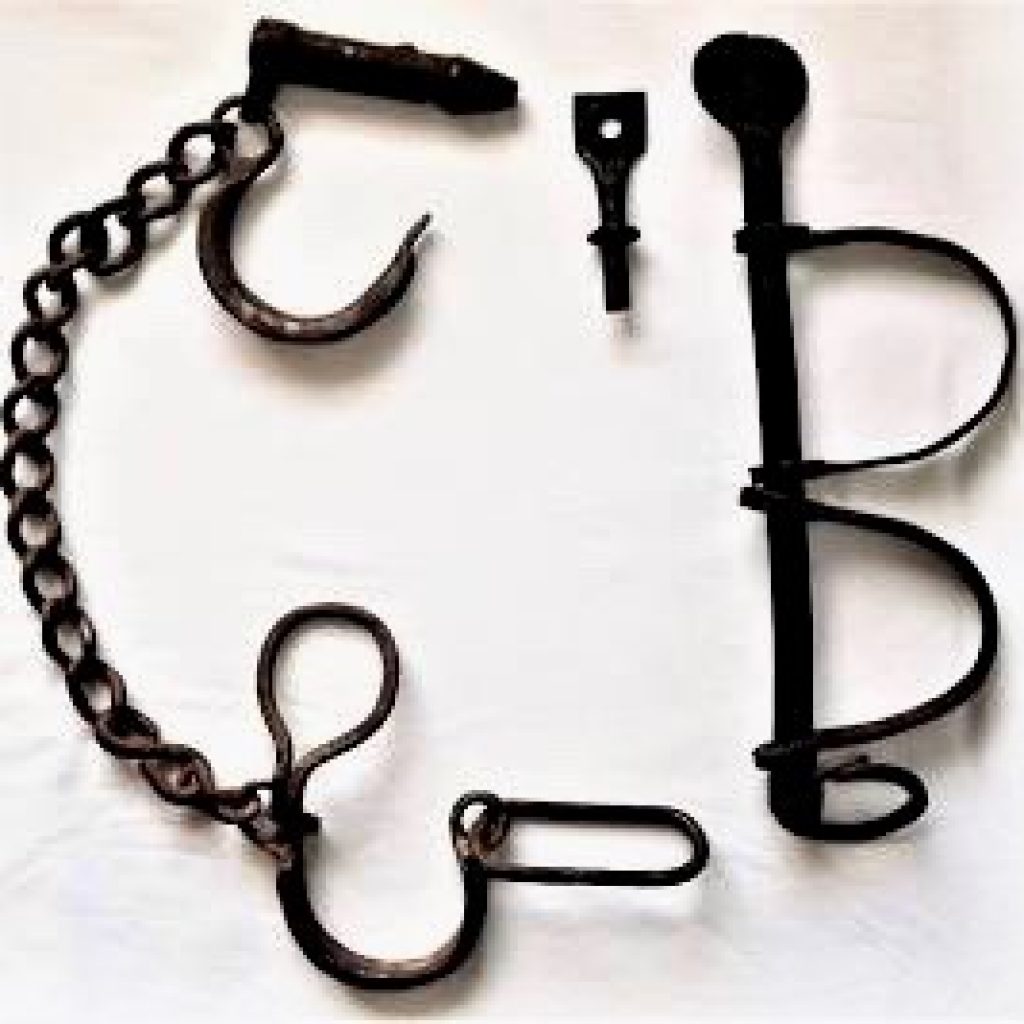
Their collection also includes numerous genuine documents that promoted the buying and selling of enslaved Africans. These rare collectibles bring history to life. Together we provide moving presentations and use items in the collection to demonstrate what it was truly like to “Be a Slave.” Mr. Ragsdale’s vast experience has made him a renowned expert in authenticating slavery artifacts, documents and the like. Both collectors and sellers constantly call upon him for his knowledge. During presentations he uses several of his extraordinary collectibles to demonstrate and explain what it was truly like to “Be a Slave.” Gwen uses her skills to deliver compelling presentations that she inter-weaves with historic accounts and actual slave narratives. She coordinates the museum tours, traveling exhibits and researches and writes the contextual descriptive panels displayed throughout the collection. Together, the Ragsdale’s shed light on a dark and tragic period in American history and pays tribute to the generations of slave ancestors who greatly contributed to the building of America. Lest We Forget Slavery Museum and LWF Traveling Exhibit(s) perfectly document how differently coming to America was for enslaved Africans.
_______________________________________________________________
5. Oran Z Belgrave Collection (African American Slavery Collection)
On a recent afternoon, from the villa’s oversize front door emerges a short, heavyset black man wearing an elaborate black-and-gold agbada, a sleeved robe from West Africa. His name is Oran Z.
Before he moved to this isolated spot in 2012, he presided over an independent museum of his own making, Oran Z’s Pan-African Black Facts & Wax Museum in Los Angeles. It offered a dizzying kaleidoscope of black Americana, from wax figures to historical artifacts to racist, Jim Crow-era memorabilia. From 1999 to 2011, the popular local attraction presented an up close and idiosyncratic view of African-American history in a largely black neighborhood. But when a massive redevelopment project came to the area, Oran says, he was forced to close. He packed his collection — some 3 million objects, he says — into shipping containers and exiled himself to the desert. Now, the passion project that he saw as a public service has become a millstone.
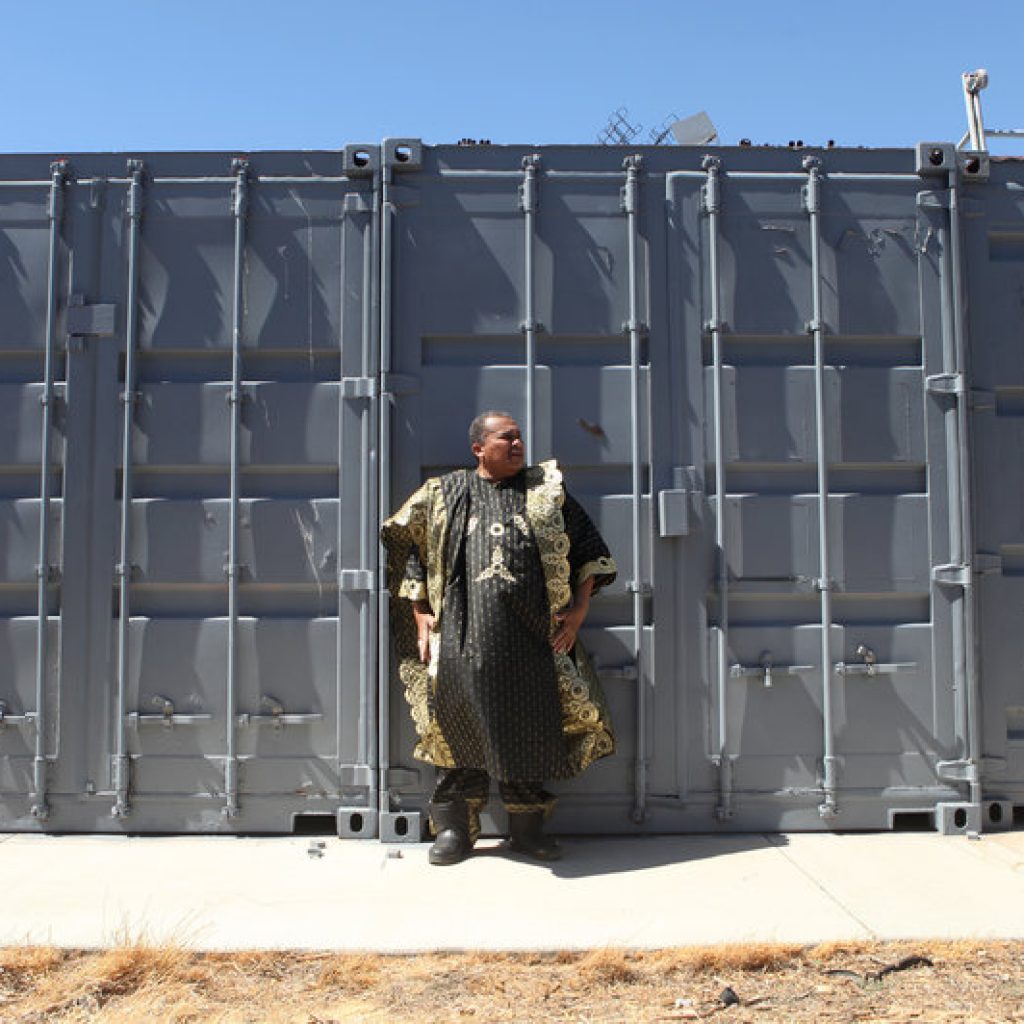
Oran, 67, is struggling with both poor health and worry over the future of his life’s work — a strange, surprising chronicle of black Americana. There’s no one — or institution — lined up to take care of the sprawling collection, and he fears this slice of an often undocumented part of African-American history may die with him. Parts of this history are currently housed on the full-to-bursting shelves that line most of the walls in the living room of Oran and his wife of 18 years, Betty Belgrave. Among them are some items of historical interest: baseballs from the Negro Leagues, slave shackles, a purple triangle badge used to mark Jehovah’s Witnesses in Nazi concentration camps. And there are many blatantly racist items — from “Alligator Bait” postcards featuring black children and mammy-shape cookie jars to cast-iron “Jolly N*****” coin banks.
______________________________________________________________________________
6. Dr. Bob Allen
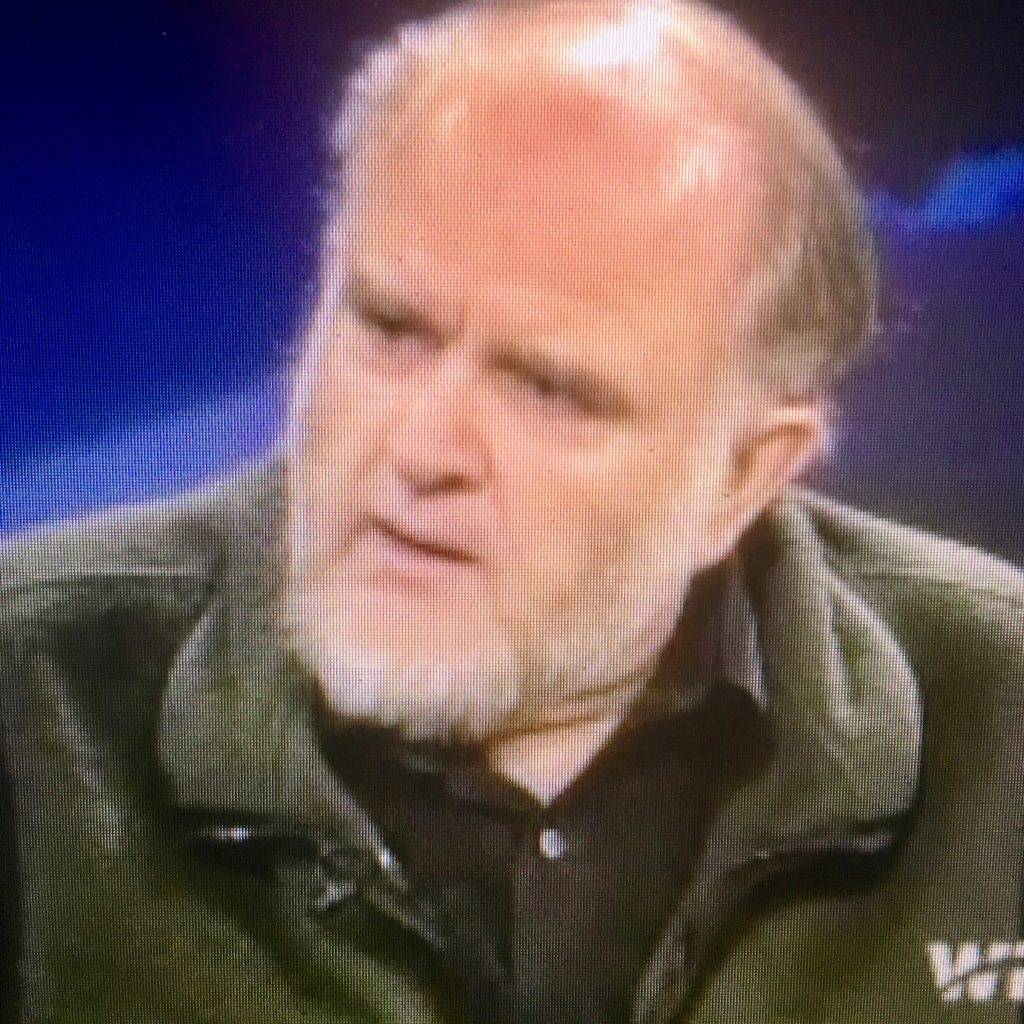
An Oral History Collection by Dr. Bob Allen: The Souls of Black Baseball
Veteran of the Negro League Baseball era, catcher for the Philadelphia Stars, the late, great Bill “Ready” Cash could spin out a story that takes away your own breath as he tells it. Like the one about the 28 day bus trip the team took in the late 40’s: going through towns 75-80 miles an hour because they had to make the schedule; blowing out motors and getting speeding tickets in the bargain; playing games along the way from Philadelphia, winding south 1900 miles away to Tyler, Texas.
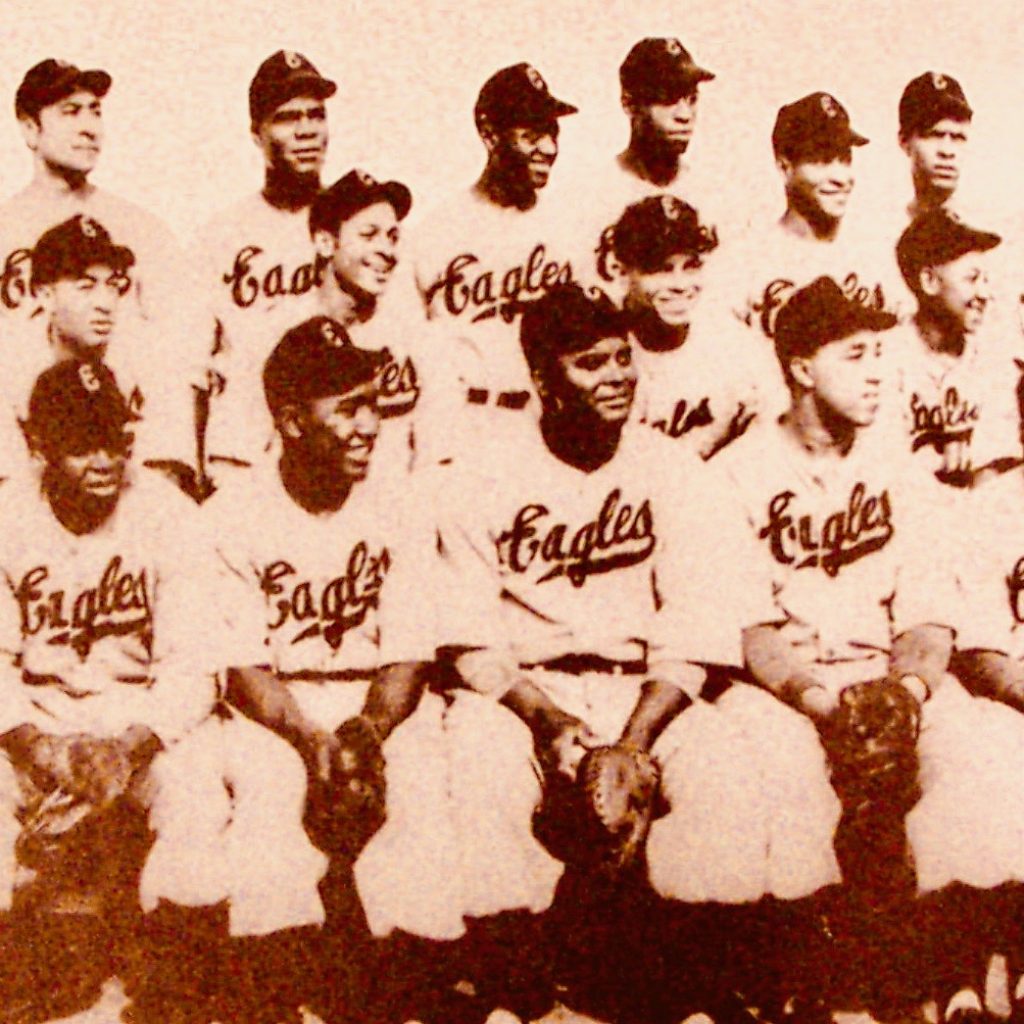
This and many other stories, some tragic and sad, others side-splitting hilarious, are part of and emerging from an oral history project by Dr. Bob Allen, a free lance writer and researcher, and former teacher at the Pennsylvania State University. Allen’s travel throughout the northeast in the last dozen years, and his intention to visit and interview on film every surviving player from the Negro Leagues, was based on a three part goal: to preserve, promote, and promulgate the history and stories of Negro League Baseball.
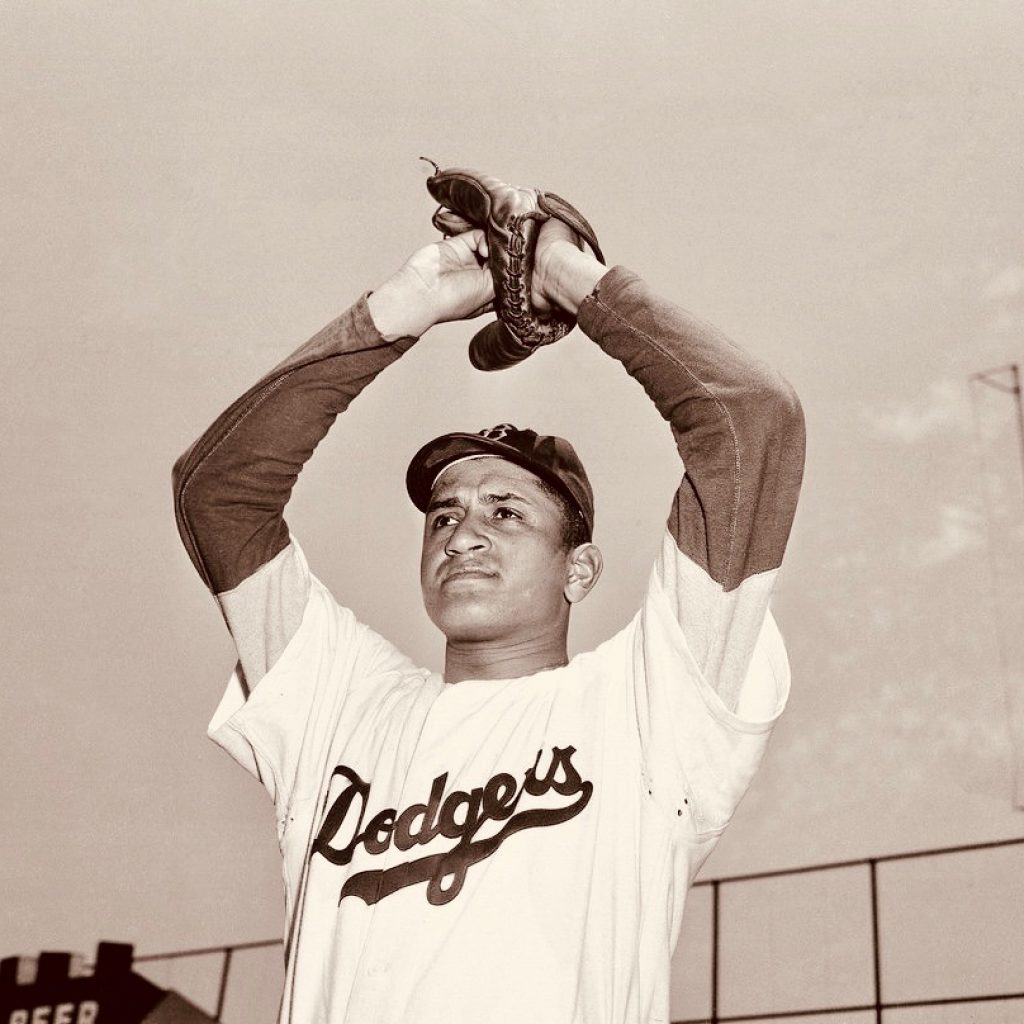
To date, the project has collected over 389 hours of film footage of Negro Leagues histories. Yet, there is more to be done and further support to continue the project is needed. A detailed description of the project is available to all interested. In summarizing the project, Allen notes:
He recently published the biography of Harold Gould of the Philadelphia Stars of the Negro National League titled HE CAME FROM GOULDTOWN. An oral history writer on the history of Negro League Baseball, in addition to serving on the Socety of North American Hockey Research USA Executive Board, Dr. Allen serves on the Induction Committee of the Black Hockey And Sports Hall of Fame. He is currently teaching at Rowan College of South Jersey’s Cumberland County Campus and for Stockton University.
Allen is currently a teacher of cultural geography, sociology, and history for Rown College of South Jersey’s Cumberland County Campus and for Stockton University. He is also developing and continuing a project to interview all surviving Negro League Baseball players and turn their voices into film documentary form and for educational usages. This project is being developed in association with the Multi Ethnic Sports Hall of Fame of Oakland, CA. To see the interview of Dr. Bob Allen talk about the Negro League Baseball go to the link below:
http://podcasts.wpsu.org/Pennsy02082008173000.mp4
_______________________________________________________________
7. Eric Edwards African Art Collection Worth $10 Million
Eric Edwards African Art Collection Worth $10 Million. Please visit www.dynastamir.com for indigenous African creativity, art, jewelry, and clothing. www.searchforuhuru.com to support our projects. Lastly, buy one of my children’s books at https://www.amazon.com/Dynast-Amir/e/…. P instagram:dynastamir instagram:searchforuhuru facebook:searchforuhuru twitter:searchforuhuru photo courtesy of Okay Africa.
Inside the Bed-Stuy Home of Eric Edwards and His $10 Million-Collection of African Art by Sam Blum
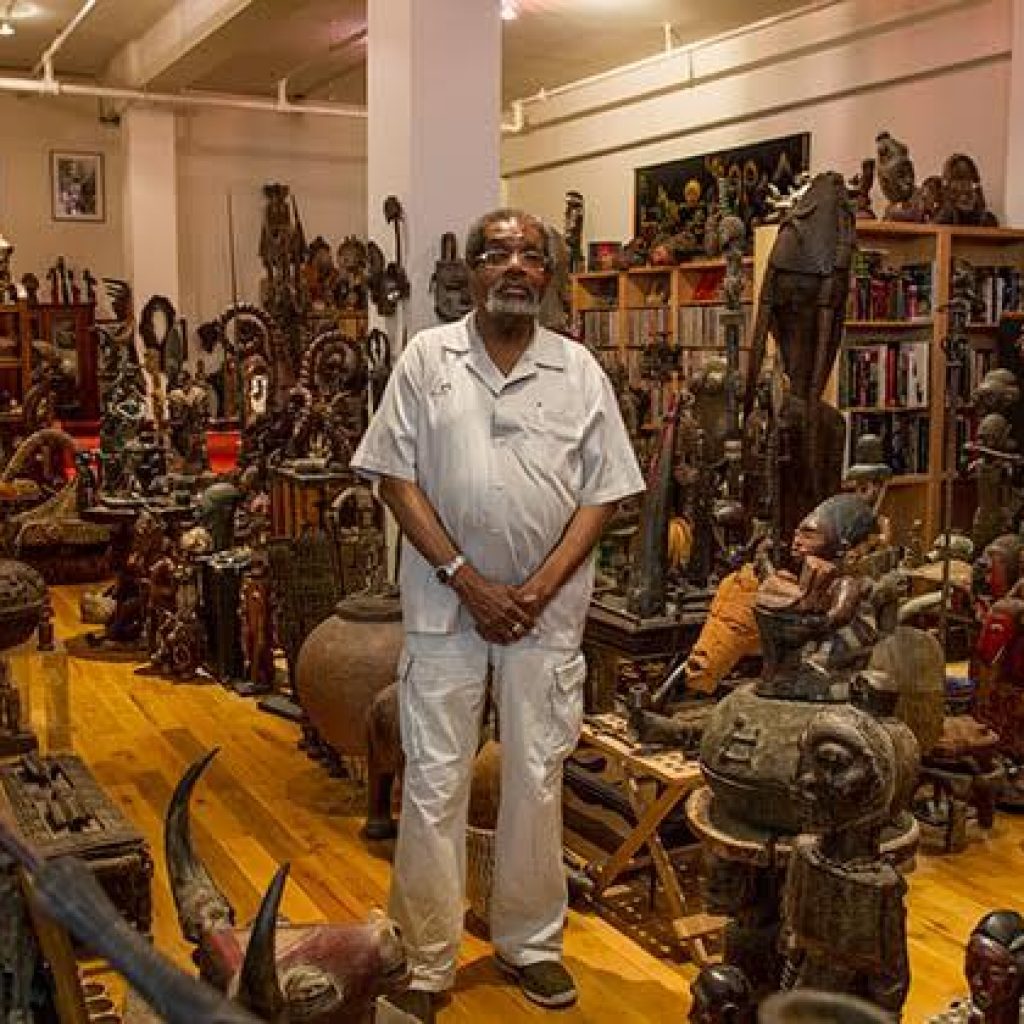
Edwards at his home in Bed-Stuy. Photo: Jane Bruce
Eric Edwards lives on an unassuming street lined with tall, red-brick buildings in Bed-Stuy. His own building is otherwise innocuous, and lends itself to no more rumination than any neighboring apartment complex. But inside this building, and in his very apartment, Edwards stows an estimated $10 million collection of African art and tribal artifacts.
His collection sprawls so densely across the floor, it’s as if it is part of it, growing from the ground beneath. The effect is impressive, if somewhat jarring; the smooth and jagged contours of his sculptures, drums, tools, weapons and weavings careen towards the ceiling like breaking waves in a choppy current. To walk through this living room is to experience generations of African history, and you’d be a fool if you weren’t anxious about breaking a piece worth more than your yearly salary.
At the end of the vibrant maze stands Edwards, a retired AT&T executive who’s lived in Brooklyn his whole life, minus a two year stint in Atlanta. Although his collection elicits awe and wonder in guests, Edwards is thoroughly at ease among “the spirits.” Edwards’ sister, Myrna Edwards-Williams, says that her brother has “always been a collector, since he was little.” She invokes memories of Eric fiddling with things like Lionel Trains and baseball cards as a boy, only to find him polishing dust off a massive shelf packed with 40,000 LPs as a man.
While his 1,600 piece collection of African art borders on the fringes of compulsion, especially considering the lengths he’s gone to acquire certain works, Edwards is more like an archaeologist searching for missing links than a collector looking to profit. The artifacts, which he gradually acquired through auctions and his relationships with different gallery owners over the last forty-five years, span all fifty-four countries of the African continent. Some are even 2,000 years old. His pursuit is the preservation of history, something for which he gained reverence through his father as a boy.
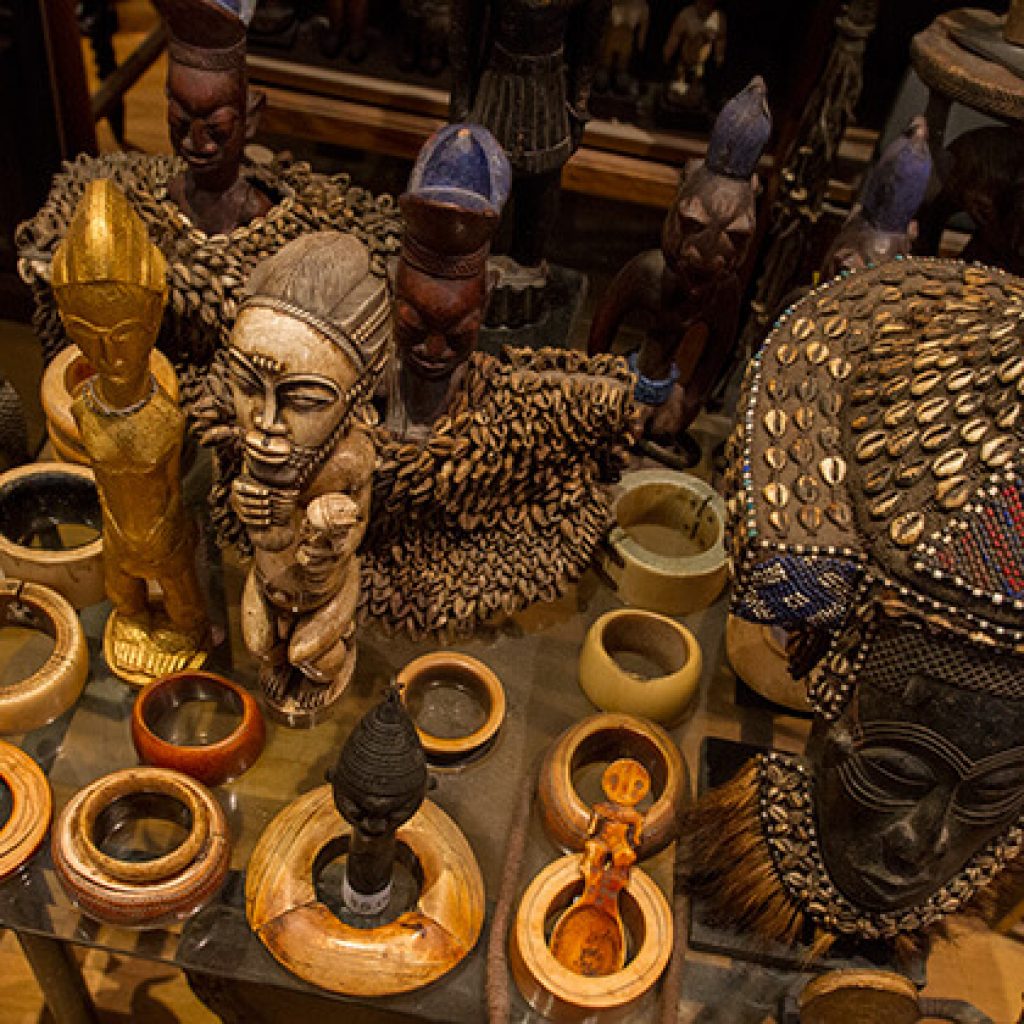
“He realized that we needed to know something about our culture and our history because he saw it wasn’t taught in the public school system,” Edwards says of his father, an immigrant from Barbados in the 1930’s. This importance of knowing one’s self and one’s heritage is the reason Edwards has been amassing these artifacts for so long.
Edwards said his dad emphasized education so as to “inoculate us from racism so we would always be proud of ourselves, know where we came from and know that we can accomplish whatever we wanted to.” In the spirit of that message, Edwards, who only unveiled his collection publically for the first time in 2003, announced a Kickstarter campaign this month geared towards opening The Cultural Museum of African Art, a would-be permanent home for his assemblage that he hopes to establish in Bed-Stuy.
Opening a museum isn’t a matter of simply celebrating the precious relics in his possession, but rather, a way of extending his dad’s message of personal empowerment. Edwards wants to convey the multi-faceted aspects of African heritage to a large audience, primarily young people of color. Edwards says that giving African-American kids a window into their cultural past will inevitably translate into “a greater sense of self-respect and motivation…and it’s going to make them better citizens and contributors to society, and we really need that.”
Although Edwards’ collection has gradually crowded the floor space of his apartment over the years and stayed put there, his experience in acquiring such a vast cadre of artifacts is as rich and varied as the objects themselves. He points to a weaving from Cameroon to illustrate this concept, explaining that a royal family performed a passage of rights to formally grant him ownership of the object, which had originally belonged to a tribal chief. The ceremony didn’t take place in Cameroon however, but right in his apartment in Brooklyn, next to his kitchen. “For me to take possession of this piece, he [the chief] had to send emissaries here to Brooklyn with the piece, totally enshrouded in a special casing, which they had to unwrap. Then there was as special ceremony that they conducted in the Bamileke language,” says Edwards.
_______________________________________________________________
8. Interview with Dr. Joel A. Freeman about the Freeman Institute Black History Collection & the Gallery Project
Joel Freeman Collection
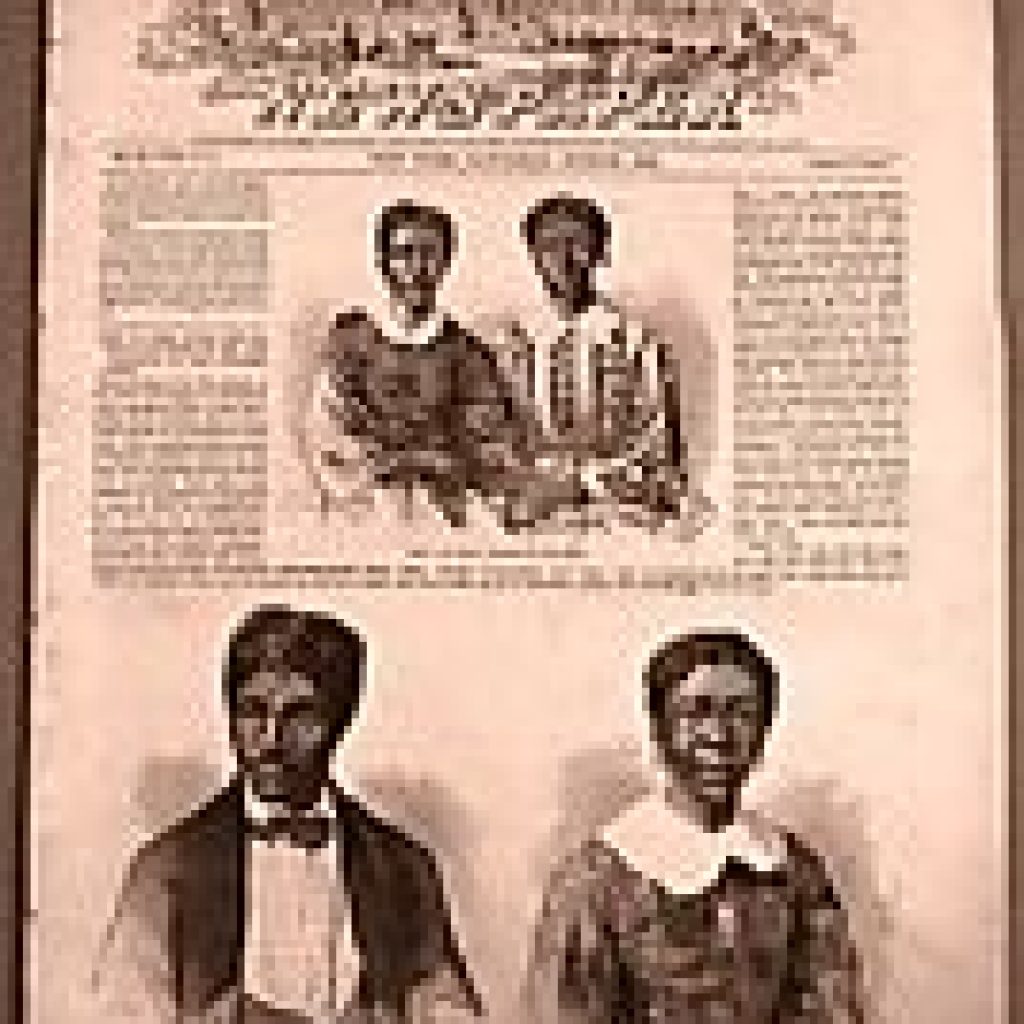
Dred Scott, his wife, Harriet and 2 daughters and Eliza and Lizzie
Joel Freeman speaks all over the world on various topics (leadership, emotional intelligence, conflict resolution, diversity…) to many different organizations. This is the segment from Fox News Channel with Kelly Wright on his program, “Beyond The Dream” aired Feb 4th, 2012. The interview was shot in May 2011 at the United Nations. BACKGROUND: Twenty original documents and artifacts from The Freeman Institute Black History Collection were showcased at the United Nations Transatlantic Slave Trade exhibition (March – May 2011). After years of research, Dr. Joel A. Freeman has cobbled together a rather remarkable Black History collection of well over 3,000 genuine documents and artifacts. The oldest piece is dated 1553 –. One of the items that was exhibited at the United Nations was a priceless 50 pound slave ball found off the coast of Florida at the site of the oldest documented slave ship wreck, the Henrietta Marie. The ship sank sometime between June and July of 1700. Another item was an authentic metal neck piece, designed to be welded permanently around the neck of a young female slave. It has metal balls and rings incorporated into the piece so that her movements could be detected at all times. Another piece on exhibition was the one-of-a-kind 1833 document hand written by Lord Aberdeen, who at that time was the British Foreign Consul in Trieste, Italy.
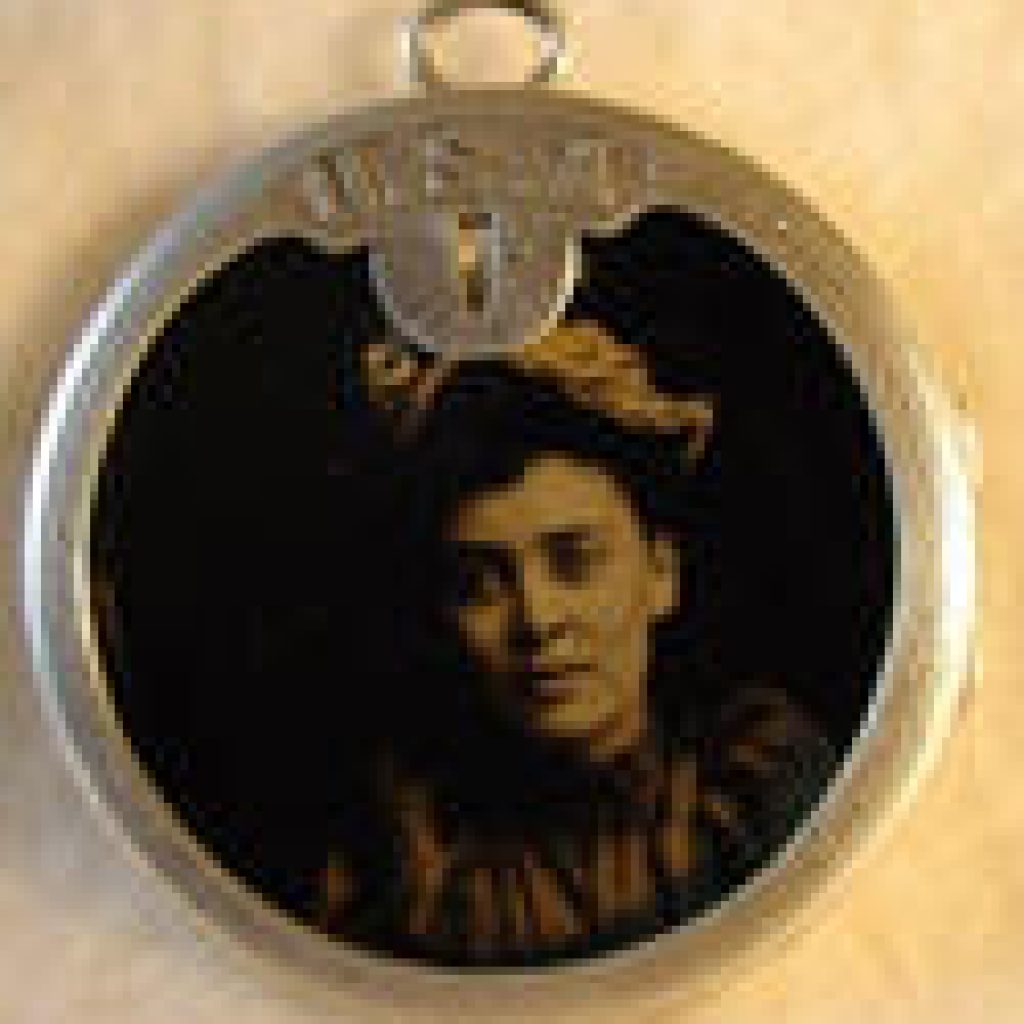
Civil War locket worn by a African American Soldier
It announced what would happen to any British subject who was still involved in the Slave Trade. Aberdeen later became the Prime Minister of Great Britain. Also included were two signed 1858 slave insurance policies from La Protectora, an insurance company in Cuba, providing proof that slave traders routinely covered the people they enslaved with life insurance policies. Consequently, they didn’t care if they had to push slaves overboard or even if the slaves lived or died on the voyage. The traders were paid regardless. Many other items were also on display, including: engravings of slave ships, a document about a Chinese slave in Cuba written in Chinese on one side and Spanish on the other, a 14-page hand written Peruvian register (1811) from San Bartolome’ Hospital (built in the late 1600’s) listing the African slaves, and an extremely rare plaque (Eastgate Pottery) commemorating William Wilberforce and his anti-slavery campaign. The Freeman Institute Black History Collection is utilized by The Freeman Institute Foundation to help establish Black History Galleries across America and in selected communities internationally — designed to educate and inspire young people of all ages –.
In 2012 the United Nation invited Dr. Freeman to showcase 20 more documents and artifacts in the “Transatlantic Slave Trade” exhibition (March – May, 2012). This is the 2nd year Dr. Freeman has participated in this particular exhibition. Also, the United Nations is continuing to show documents from The Freeman Institute Black History Collection in their on-going exhibition traveling around the world. Already eleven nations have signed on (Madagascar, Colombia, Switzerland, Senegal, Trinidad & Tobago, Bolivia, etc.), with more countries expressing interest in hosting the exhibit.
_______________________________________________________________
9. Elizabeth Meaders Collection has homemade Black History Collection in her NYC home
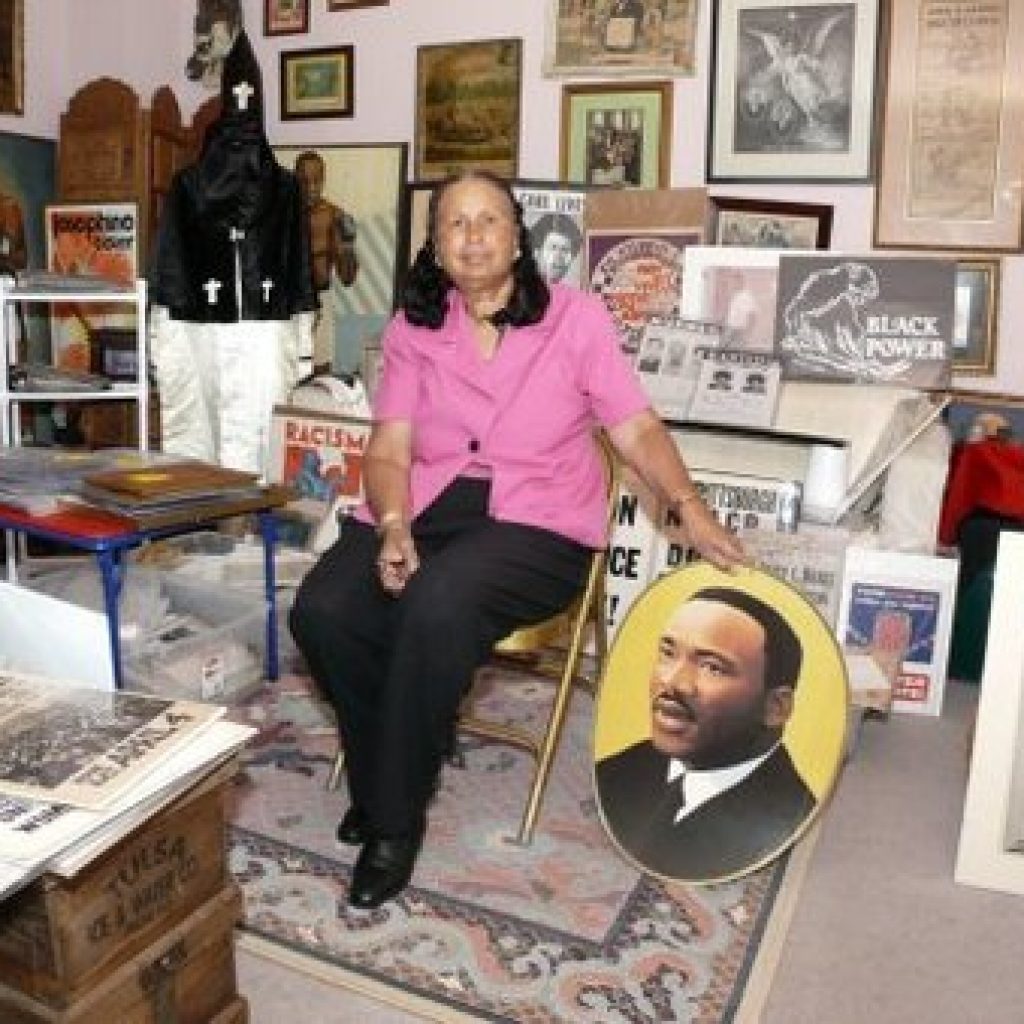
NEW YORK (WABC) — Elizabeth Meaders is a retired school teacher who taught at a school named after her great-great grandfather, who was the last slave freed on Staten Island.
In what may be the most comprehensive collection of African-American history assembled by a single person, Meaders owns over 50,000 items in her home. Meaders invited ABC7 into her home which at first looked like a makeshift museum experience, but took us back in time in a deep seeded history of America.
“I’ve been working very systematically on the collection for more than 50 years. This only being done for my own personal pleasure, but now I realize that I was on to something serious and worthwhile,” said Meaders.
In terms of African American History, this is the mother load. “This is a World War I French helmet. This hat could tell the whole story of the Vietnam war,” she said, “It reads – I don’t want to die in no white man’s war.” From civil rights and what she calls “civil wrongs”, to military, politics, education and religion, Meaders has quite the collection. “When you don’t know the history of people it’s very hard to respect them. And so I call my collection a healing and teaching entity. It’s my whole purpose.”
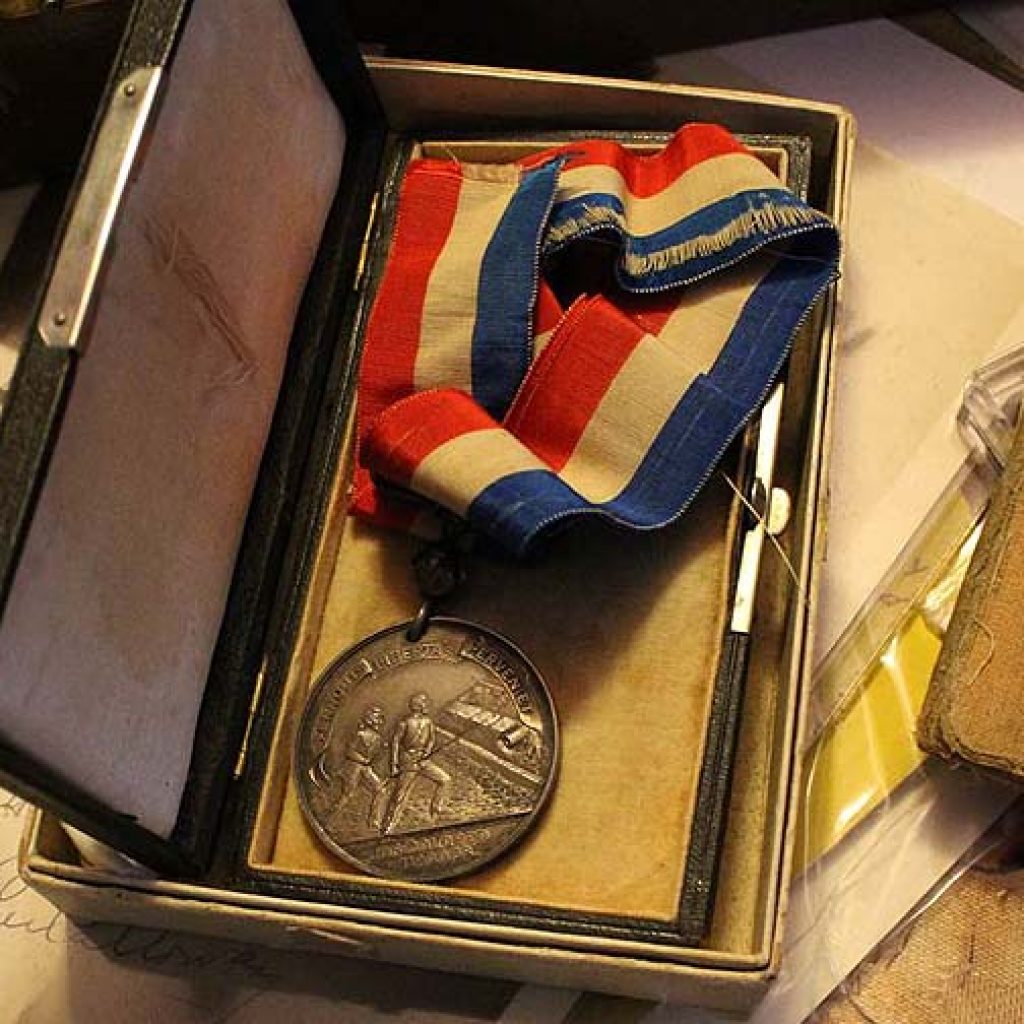
Meaders ended the tour by performing what she calls “an old lady’s rap” in honor of the 400th Anniversary of African Americans being enslaved in America. Listen to her “rap” and read below:
From civil rights and what she calls “civil wrongs”, to military, politics, education and religion, Elizabeth Meaders has quite the collection. Meaders is a retired school teacher who taught at a school named after her great-great grandfather, who was the last slave freed on Staten Island.
In what may be the most comprehensive collection of African-American history assembled by a single person, Meaders owns over 50,000 items in her home. Meaders invited ABC 7 into her home which at first looked like a makeshift museum experience, but took us back in time in a deep seeded history of America (see video below).
In terms of African American History, this is the mother load. “I’ve been working very systematically on the collection for more than 50 years. This only being done for my own personal pleasure, but now I realize that I was on to something serious and worthwhile,” said Meaders. “When you don’t know the history of people it’s very hard to respect them. And so I call my collection a healing and teaching entity. It’s my whole purpose.”
10. Bill Costen: Nation’s First African American Cemmercial Air Balloon Pilot
Hot air balloon pilot Bill Costen is one of few to receive the prestigious ‘Ed Yost Master Pilot Award.’ This lifetime achievement award recognizes pilots who have demonstrated safe operations for 40 or more consecutive years.
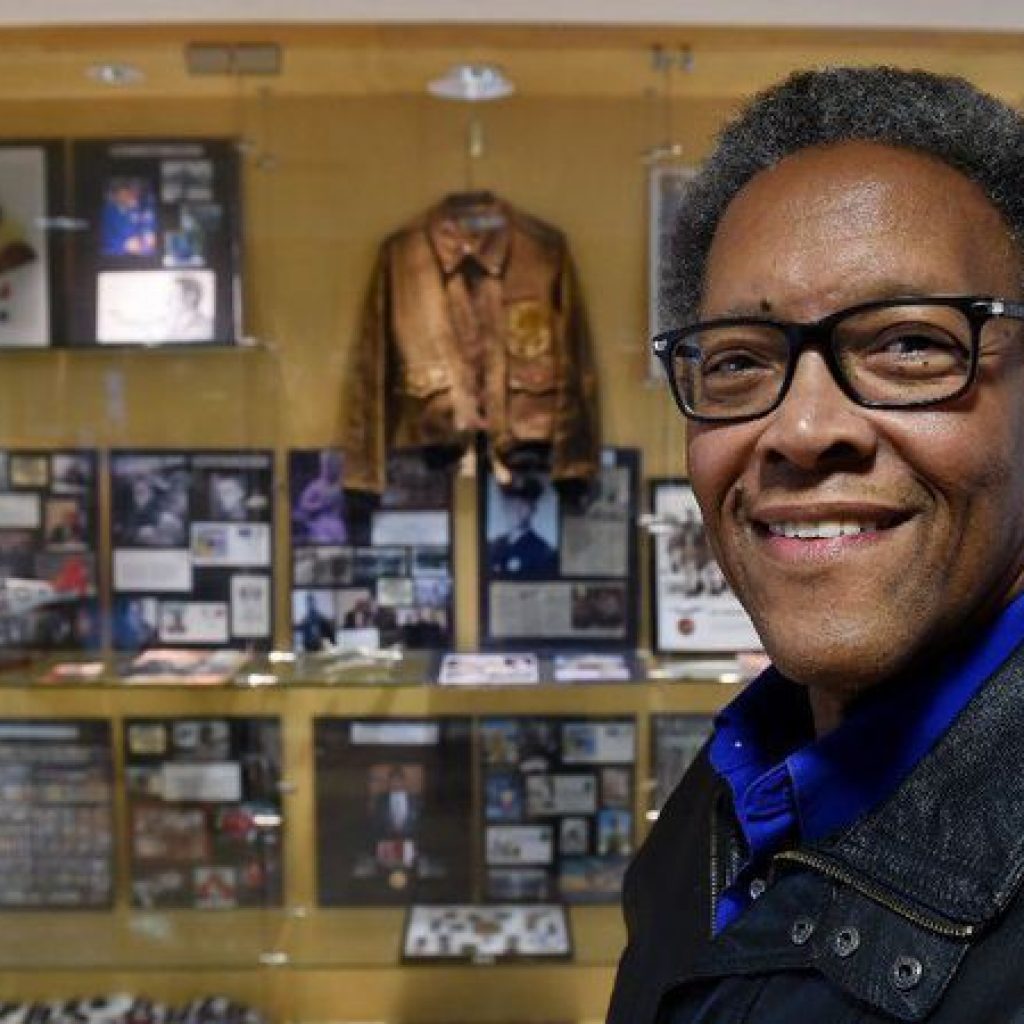
Bill Costen, of Bloomfield, has an exhibit, In Honor of African American Veterans: The Costen Cultural Exhibition, at the Hartford Public Library. The exhibit includes hundreds of photographs and items from Costen’s collection. It runs through Dec. 14. (Cloe Poisson / Hartford Courant)
Bill Costen, born William Hollis Costen is an African-American hot air balloon pilot, business owner, photojournalist, professional photographer, black memorabilia collector, curator, archivist and exhibitor. Born in Omaha, Nebraska in 1947, he grew up playing sports and earned a Boy Scouts of America Eagle Scout badge by the age of 13. He played football in high school and graduated from Central High in 1965. He attended the University of Nebraska in 1965 and transferred the next year to Morris Brown College in Atlanta, Georgia, where he graduated with a double major in mathematics and psychology and received a Bachelor of Science degree in 1970.
During the summers of his college years, Costen worked as a porter on the Union Pacific Railroad with train runs from Omaha to Idaho, Utah, Wyoming and Denver Colorado. After graduation, the Buffalo Bills professional football team drafted him as a defensive tackle. During his very first game, he realized a dream as he picked up the ball on a blocked punt and scored the only touchdown for Buffalo against the New York Jets. After leaving Buffalo, he played two years with their farm team, The Hartford Knights, located in Hartford, CT. For the next 14 years, he worked in the insurance industry at Travelers, CG/Aetna, CNA and CIGNA as a commercial property/casualty underwriter. Having an entrepreneurial spirit, he always wanted to own his own business.
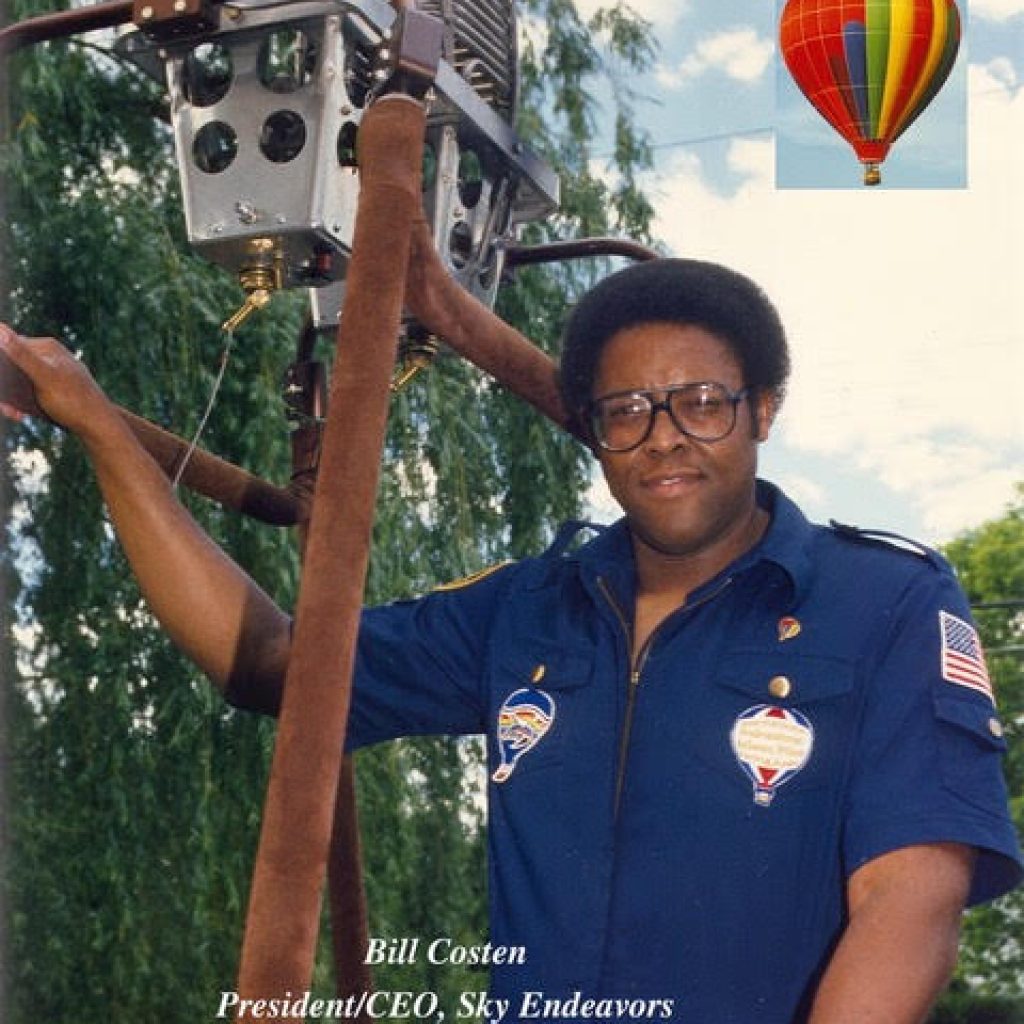
Bill’s ballooning career began in 1975 when he created and designed “The State of Connecticut Bicentennial Balloon,” which was dedicated by Governor Ella Grasso. He became a Raven (Aerostar) Dealer and started Sky Endeavors with Jim Isler; a hot air balloon company dealing in sales, instruction, rides and promotions. Throughout the years, Bill has trained several people to become balloon pilots and has used his balloon for advertising purposes for many major corporations. He has given tether rides to thousands of people attending annual fairs and outdoor functions. He has done grand openings for car dealerships, restaurants, stores, malls and businesses across Connecticut. Schools have used his balloon to motivate, reward and entertain students. Many organizations have rewarded employees and supporters with gift certificates to fly at their leisure.
Bill has given balloon rides to thousands of people and has done numerous promotions for various companies and organizations. He has flown in balloon festivals and races all over the country, and has been featured in many newspapers and magazines. He was an active member of The International Professional Balloon Pilots Racing Association. Being the first African American commercial hot air balloon pilot in the country, he was featured in Ebony Magazine in 1977 and Black Enterprise in both 1981 and 1989. In 2016, he received a Lifetime Achievement Award from the Balloon Federation of America called the “Ed Yost Master Pilot Award,” which recognizes lighter than air (LTA) pilots who have demonstrated professionalism, skill and aviation expertise by maintaining safe operations for 40 or more consecutive years as active pilots.
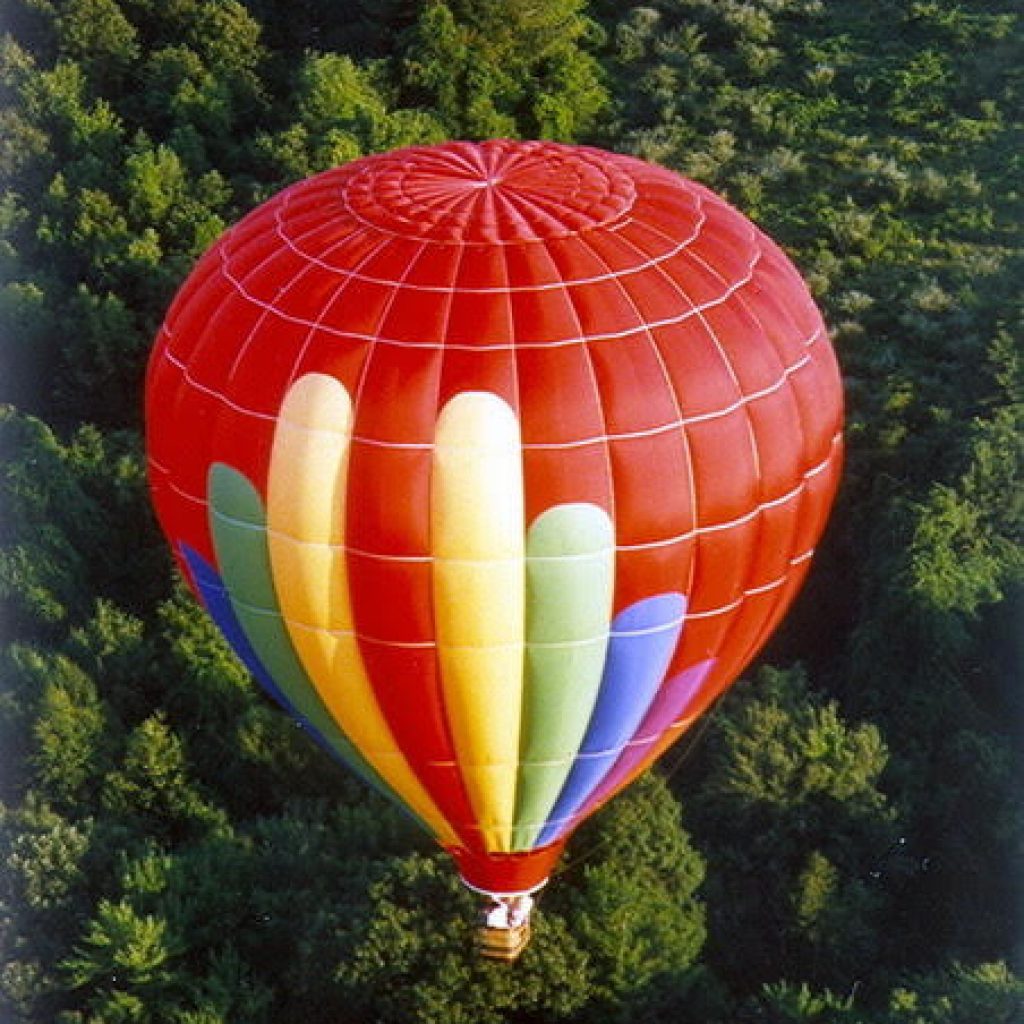
Bill has been President and CEO of Sky Endeavors LLC (hot air balloon promotions) since 1975; Owner of The Costen Cultural Exhibition (traveling exhibition) since 1988; Photojournalist for Northend Agents (African American newspaper in Hartford CT) and a professional photographer specializing in documenting historic and special events including sports, celebrities and politicians since 1999. He has been on the Board of Directors of the New England Air Museum of Windsor Locks CT since 1989, and has served as a deacon and church photographer at The First Cathedral in Bloomfield, CT since 1991. He has received community awards and has been a guest speaker for different organizations. In 2014, he received the June Archer & Eleven28 Entertainment’s One Hundred Men of Color Award, which recognizes men of color in business, education, entrepreneurship, government, entertainment and service and the impact they have on the lives of people throughout their communities.
Bill’s collecting interests originated in high school with his coin collection and saving his Eagle Scout uniform, badges and certificates. He also saved his railroad memorabilia from working on the Union Pacific Railroad during the summer of his college years. Being an avid archivist and collector, he created “The Costen Cultural Exhibit,” a unique collection of rare photographs, ephemera, memorabilia, fine art and collectibles. The collection has been custom designed to travel to any location and show the contributions and accomplishments of Americans with an emphasis on African Americans throughout history. Topics address the interests of all age groups and include: Africa, slavery, civil rights, politics, government, invention, science, athletics, sports, aviation, military, music, dance, theater, literary arts, religion, radio, film, television and other forms of popular entertainment. It includes exhibitions on the history of “African American Golf,” “The Tuskegee Airmen,” “The Pullman Porters” and a photographic history of “The Freedom Schooner Amistad.” The exhibit has been displayed at fundraising events, schools, colleges, universities, museums, historical societies, churches, community organizations and corporations. To read more go to the link below:
http://purehistory.org/wp-admin/post.php?post=47441&action=edit

